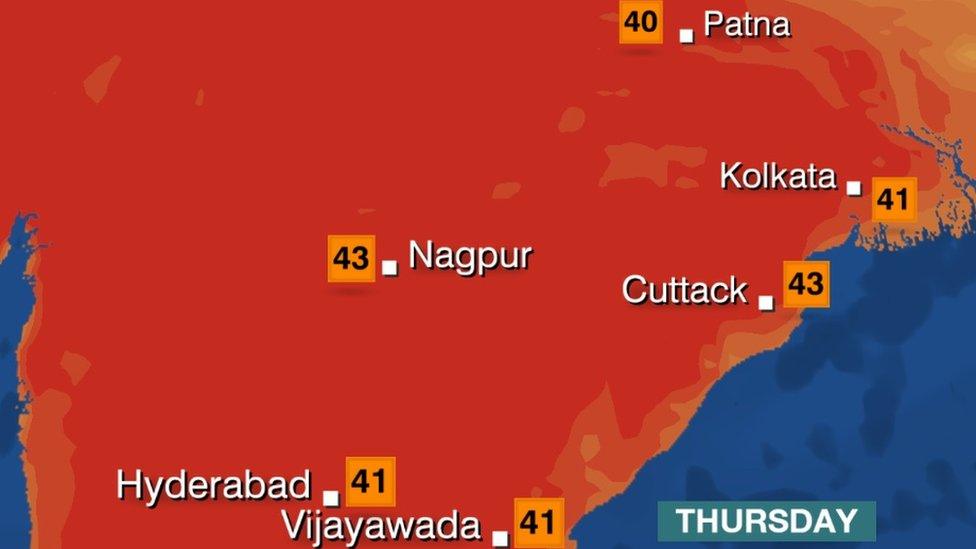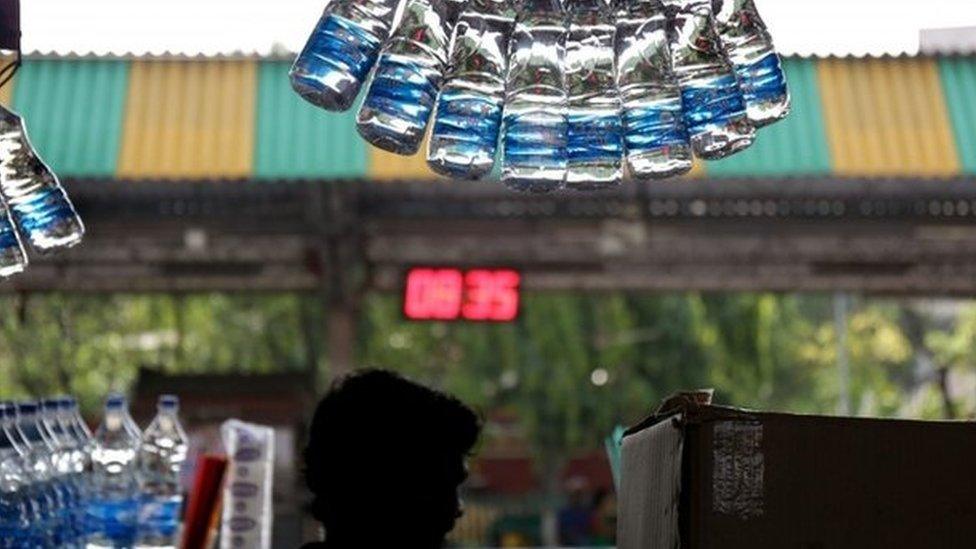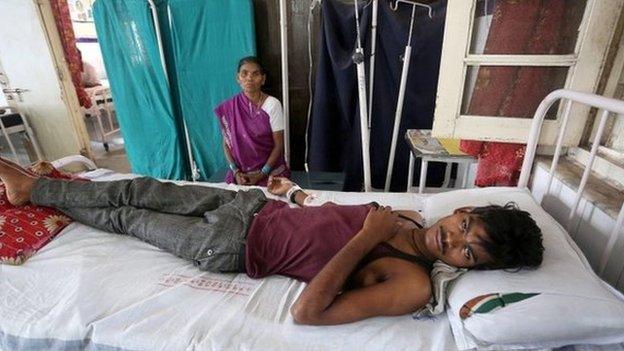India weather: Dangerous temperatures arrive early
- Published
Temperatures are significantly higher than usual in parts of India
A heatwave across most of India has led to a hotter than usual summer in much of the country. Broadcast meteorologist Peter Gibbs describes the situation.
Dozens of deaths have been reported in the south Indian states of Telangana and Andhra Pradesh and the city of Bhubaneswar in Orissa experienced its hottest April day on record on Monday, temperatures peaking at 45.8C.
The run-up to the Indian monsoon season is always characterised by weeks of strong sunshine and increasing heat but this year, life-threatening temperature levels have set in rather earlier and more widely than normal.
The heatwave extends across much of northern India with temperatures having exceeded 40C for several days in a row.

A persistent wind from the west means that places like Bhubaneswar and Kolkata, which would normally benefit from cooling sea breezes off the Bay of Bengal, are instead being bathed in fiercely hot air from the interior.
And many parts of that interior are baked dry, following a poor monsoon season in 2015 due to the strong El Nino event in the Pacific.
Some parts of Maharashtra and Uttar Pradesh received little more than half the normal rainfall and that dry ground amplifies the effect of the summer sunshine, heating the air above even more strongly.
While there are signs that the heatwave may ease slightly in West Bengal and Orissa, statistically the hottest months of the summer are yet to come.
Permanent relief from the heat only comes with the arrival of the monsoon, normally in mid-June.
- Published8 April 2016

- Published29 May 2015
